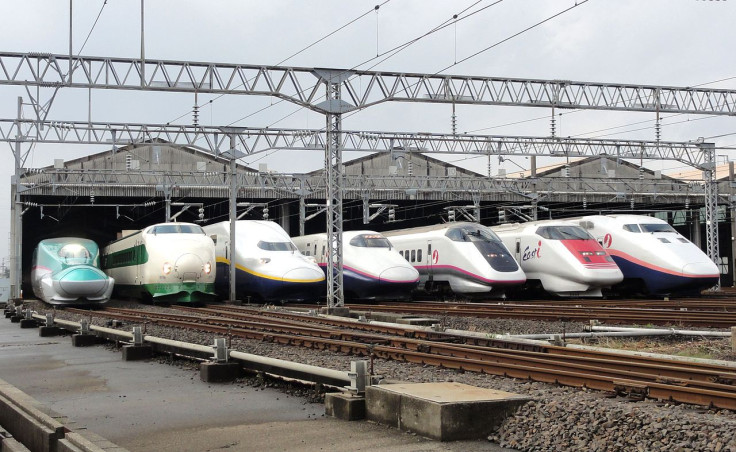Shinkansen Maglev Train Breaks 500kph Barrier
100 members of public are invited on record-breaking magnetically-levitating train's test run

One hundred lucky train fans in Yamanashi Prefecture, Japan had the ride of a lifetime this weekend when they were selected from a lottery to ride on the world's fastest maglev passenger train.
The prize-winners were aboard the experimental maglev Shinkansen train as it streaked along a 42km track between the cities of Uenohara and Fuefuki, reaching speeds of up to 500ph (310mph). In comparison, Japan's famous bullet trains have a top speed of 320kph (200mph).
I applied for my nephew who is a big railway fan, but now I am more excited than he is
An estimated 118,000 people entered the lottery, of which 2,400 won tickets for the eight day trials, during which there will be three test runs per day. One 37-year-old office worker from Kochi who rode the first train with his parents and two nephews told Asahi Shimbun website: "I applied for my nephew who is a big railway fan, but now I am more excited than he is."

If the trials are a success the Chuo Shinkansen Line will link Tokyo with Nagoya and Osaka at speeds of 505kph.
Trains which operate using magnetic levitation – maglev for short – are able to go far faster than trains with wheels because there is no friction between the track and the train, which "hovers" a fewer millimetres above the special rail.
The only limits on maglev trains are financial – China's Shanghai Maglev Train, at 431kph the world's fastest passenger service, cost some $1.4bn to build (£890,000).
This is what a 500kph maglev train #shinkansen looks like: http://t.co/53m7teylO1 #japan
— Remco (@remcogr) November 15, 2014Aside from cost, the chief barrier to constructing even faster maglev trains is air resistance. Scientists have found this can be vastly reduced by operating the trains inside air-tight tunnels with all or most of the air removed.
In theory, maglev trains in tunnels could reach speeds of up to 3,000kph, but constructing air-tight tunnels would increase the expense of providing maglev trains on a level that makes them uneconomic compared with flying.
© Copyright IBTimes 2025. All rights reserved.






















